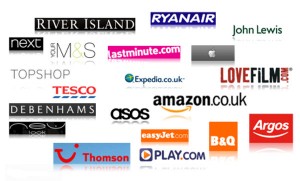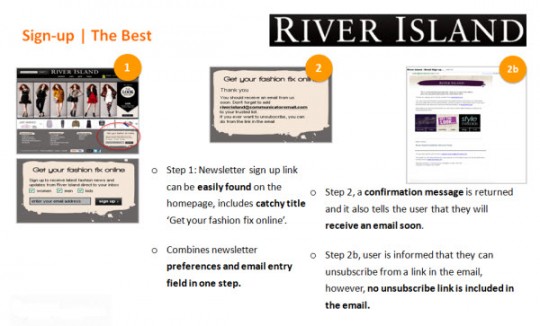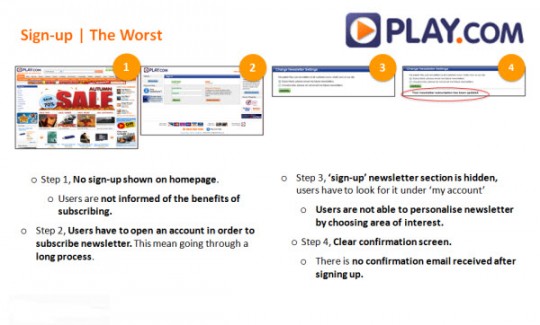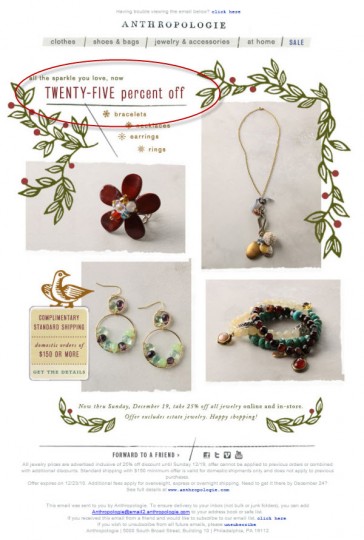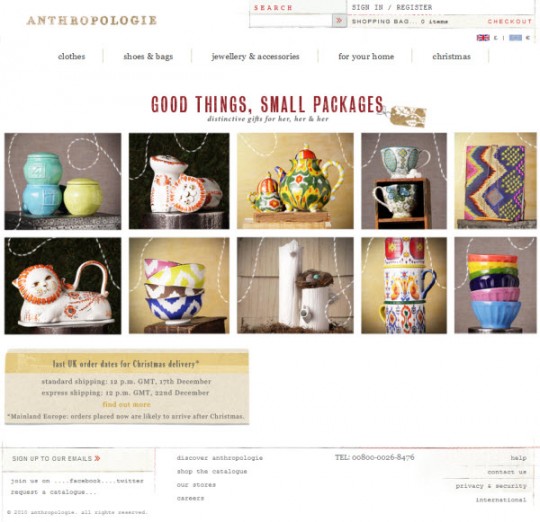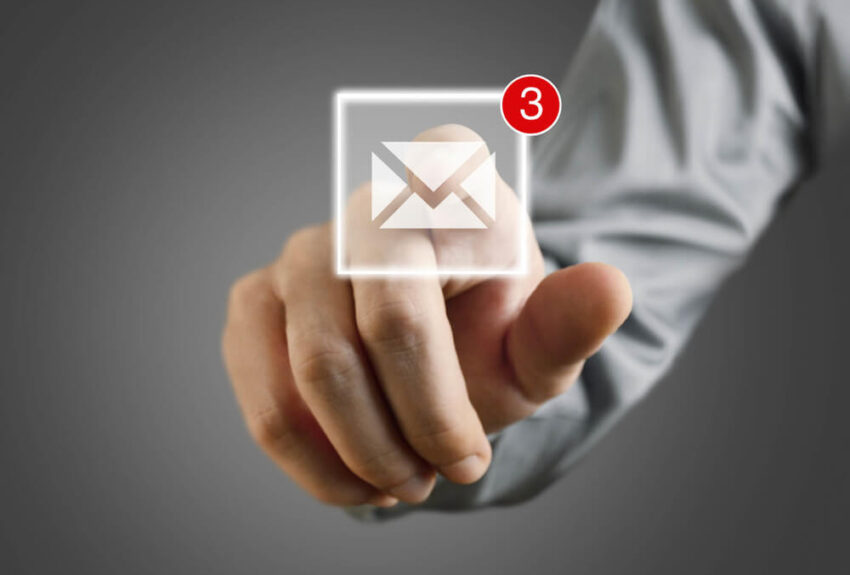This week I visited an email workshop “Email Best Practices from Sign-up to Delivery” in London presented by Dr. Philip Rhodes, Ph.D. from One to One. Dr. Rhodes reviewed email newsletters and sign up process from the top 20 UK online retailers, which I believe many of you who are looking to improve your email marketing will find very useful.
I hope this study will help you to look at your own email marketing program through fresh eyes and that by applying some of these email marketing best practises outlined here and using top 20 UK retailers as your benchmark, you will be able to gain a significant improvement.
List of the UK retailers included in this study:
Sign up process findings:
• 18/20 sites had a link to sign-up on the homepage
• 2/20 had links on deeper pages
• 12 sites sent immediate email confirmation
• No newsletters received within 24 hours
• Only 8/20 newsletters received (within 3 weeks of sign-up)
• River Island & Next performed the best
• Play was the worst
Sign up process – the best
Sign up process – the worst
Best practices – sign up process:
1. Include Sign-up on the homepage
2. Sign up should be located towards the top of the page (at least above the fold)
3. Should be accompanied by an image or icon e.g. an envelope to draw attention
4. Ensure sign-up requires minimal data entry e.g. name and email address
5. Include a short sentence stating the benefits of signing up e.g. promotions, stay up to date with news and events etc
6. Do not require any unnecessary information to be entered (such as postal address, income, etc.)
7. Do not require users to ‘create an account’ or ‘become a member’ of the site
8. Consider including a short second step/page allowing users to customise the newsletter by selecting specific areas of interest
9. Provide a ‘select all’ tick box or ‘general newsletter’ opt in
10. Provide a link to the latest newsletter so that users know what to expect before subscribing
11. Do not require users to re-enter information e.g. do not request name / email address a second time
12. Include a clear indication on the website that the subscription process is complete and has been successful
13. Ideally include a clear, separate confirmation page with different content
14. Include a clear thank you message on this page
15. Provide an indication of what the user can expect next i.e. email confirmation
16. Send email confirmation immediately
17. User should not need to ‘reconfirm’ the subscription
18. Ensure consistency with site i.e. branding and logo, etc.
19. Include information about newsletters e.g. frequency and type of content
20. Include a link back to the website
21. Include a link to unsubscribe
22. Include contact details
Best practices – newsletter:
1. Include a clear and catchy subject line so that the user immediately recognises the email
2. Ensure consistency with the site in terms of branding e.g. logo, layout, etc.
3. Include links to the site and ensure that they are clear e.g. logo and url address
4. Do not include hidden links e.g. decorative images or plain text
5. Include links to social networking sites and to share the newsletter
6. Links to the social network site e.g. Facebook page
7. Ensure that the e-mail is personalised – use of first name, etc.
8. There must be a clear option to ‘unsubscribe’. This must not be hidden within text
9. Do not use terms such as ‘remove’ or ‘opt out’. Instead use ‘unsubscribe’
10. Provide a real address, phone number or other similar contact details about the sender
11. Do not include excessive amount of text
12. Limit the length of the e-newsletter, do not cause the user to vertically scroll excessively. Test this to find what works the best for you.
Don’t forget about your landing pages!
Another very important part of your email marketing is the landing pages on your site. If you say in your email for example ‘20% off’ or ‘free delivery’, make sure the same message is carried through and shown on your website or at least on a landing page so you meet the set expectation.
In this example below you can see a screenshot from one newsletter promising me 25% off and showing me some bracelets, necklaces, earrings and rings. The subject line was: Twenty-five reasons to give (and get) jewelry.
And here is an actual landing page for that newsletter. Completely different, showing different products than in the email, plus there isn’t a single note about the ‘25% off’offer.


